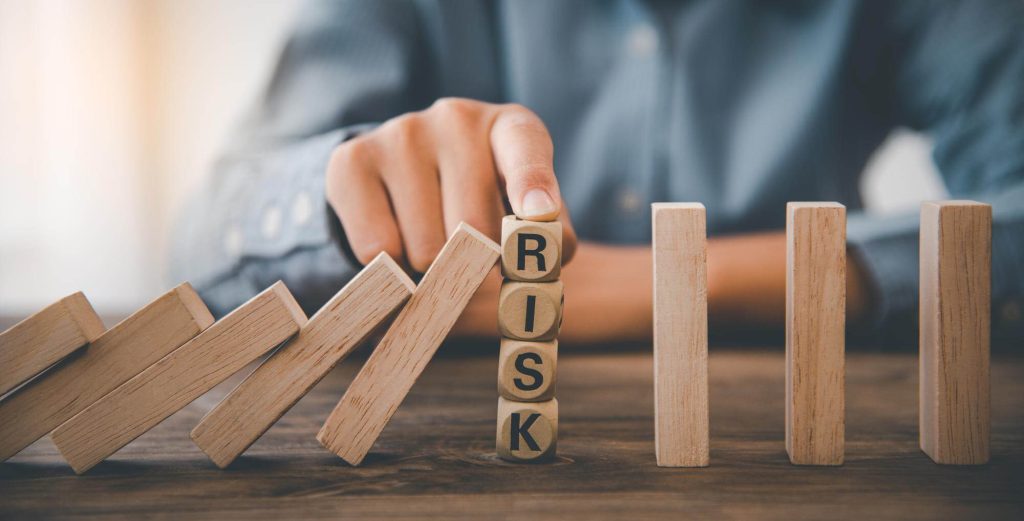
Overall, gold prices are still in a high shock trend, although lingering concerns about banking sector turbulence, the dollar index is weak, to provide support for gold prices, but the market for the U.S. debt default worries have cooled, U.S. bond yields rebounded, overnight gold prices rushed back to the high, the long morale has fallen, gold prices short-term downside risk increased, pay attention to the 1980 mark near support. However, the market is expected to come out on Friday the U.S. March PCE data will show a slowdown in U.S. inflation growth, the data out before, gold prices also still have the opportunity to shake higher.
The original article is as follows.
Spot gold rose slightly during the Asian session on Thursday (April 27) and is currently trading near $1995.36 per ounce. U.S. First Republic Bank market value plunged again on Wednesday, the core durable goods orders data performed poorly, the dollar plunged to a new low of more than a week, gold prices once surged higher to near $ 2009, but the U.S. House of Representatives passed a bill to raise the government’s $ 31.4 trillion debt ceiling by a narrow margin on Wednesday, market concerns cooled, U.S. bond yields rebounded, causing gold prices to give back gains and closed at $ 1988.4 USD/oz.
Market attention now turns to the U.S. first-quarter GDP data out Thursday evening, the market is expected to grow 2% year-on-year, which will be the worst quarterly performance in the last three months, the fourth quarter of last year for the year-on-year rise of 2.6%, before the data, the expected bias to support gold prices.
In addition, this trading day also need to pay attention to the U.S. initial jobless claims change, the first quarter of the U.S. consumer spending annualized quarterly value, the first quarter of the U.S. core PCE price index annualized quarterly value, pay attention to the U.S. banking industry related news and debt ceiling related news.
U.S. Business Equipment Spending Weakens in March on Slower Demand for Goods
New orders for key U.S.-made durable goods fell more than expected in March, and shipments declined, suggesting that corporate equipment spending may still be a drag on economic growth in the first quarter.
Last month, orders for non-defense durable goods excluding aircraft, a proxy for the much-hyped corporate spending program, fell 0.4 percent. February’s data was revised downward to show that so-called core durable goods orders fell 0.7 percent, rather than the previously reported 0.1 percent decline. Economists had forecast a 0.1% decline in core durable goods orders in March.
The credit crunch in the wake of the recent financial market turmoil has put business investment at risk, which could make it harder for small businesses and households to access capital. This is spilling over into the manufacturing sector.
Manufacturing, which accounts for 11.3 percent of the U.S. economy, is already stumbling due to the Federal Reserve’s fastest interest rate hikes since the 1980s to curb inflation.
Spending is also shifting from goods to services, while weak global demand is curbing exports. The inventory cycle is also shifting, with companies slowing restocking to accommodate cooling demand.
Shipments of core durable goods, which are used to calculate equipment spending in GDP, fell 0.4 percent in March after a similar decline in February. Non-defense durable goods shipments, which are also included in GDP, rebounded 3.6 percent after falling 1.1 percent in February.
Shannon Seery, an economist at Wells Fargo Bank in New York, said, “Equipment spending is likely to be a bit soft in the first quarter, and conditions for new capital investment continue to become more unfavorable. We expect bank lending standards to tighten further”
First Republic Bank of America shares plummet as banking sector pressure reignites
First Republic Bank’s market value plunged again Wednesday as investors watched to see if the bank could find a buyer for its assets and turn around without government support.
The bank’s stock suffered a severe sell-off, with its market value plunging as much as 41 percent at one point to about $888 million, falling below $1 billion for the first time and far from its peak of more than $40 billion in November 2021. The market cap was around $1.1 billion at the close.
A source familiar with the matter said Tuesday that First Republic Bank is considering all options, such as selling its assets or creating a “bad bank.
Wall Street banks have been working on options for First Republic Bank since March 16, when 11 banks temporarily deposited $30 billion into the bank at the height of the banking crisis.
One idea that was floated and briefly considered by JPMorgan Chase while working on a rescue package for First Republic Bank was the possibility of forming a consortium to buy the bank, but the idea did not gain traction, two sources said.
In recent days, advisers to First Republic Bank have approached at least four of the 11 banks with proposals to buy some of the bank’s assets, the sources said. Three of the banks said they did not see a way forward without the government’s support.
But media reports Wednesday, citing sources, said U.S. government officials are currently reluctant to intervene in the rescue process for First Republic Bank.
Bloomberg reported Wednesday that U.S. bank regulators are weighing a downgrade of their private assessment of First Republic Bank, which could lead to it facing potential Federal Reserve borrowing limits.
First Republic Bank’s stock was suspended several times Wednesday. The bank closed down nearly 30 percent at $5.69 on Wednesday.
Reports earlier Wednesday said advisers to First Republic Bank have listed potential buyers of the bank’s new shares, provided they can fix the bank’s balance sheet.
But analysts say there are several obstacles that could complicate the rescue effort.
David Wagner, a portfolio manager at Aptus Capital Advisors, said, “The assets (of First Republic Bank) will be sold, but it may take some time and probably at a fairly low price.”
Analysts say the difference between the “bad bank” First Republic may choose to create and some other bad banks created in the past is that First Republic has some good assets, such as mortgages, that are performing well but are priced at lower interest rates.
U.S. debt investment giant Pinho: If the U.S. debt ceiling problem is not resolved in the short term, it will increase economic resistance
U.S. debt investment giant Pinho (PIMCO) investment director Ivan Shen said Wednesday that the possibility of a U.S. default is very small, but the negotiations around the debt ceiling is expected to be very long.
Speaking at the Morningstar Investment Conference in Chicago, he said the prolonged uncertainty surrounding the U.S. debt ceiling could become a headwind for the economy, tightening credit conditions and exacerbating the current economic slowdown.
“What we’re most certain of at this point is that there’s not going to be an obvious solution in the near term,” Ivanshin added, adding that a last-minute compromise is possible.
The bipartisan standoff in the U.S. Congress over raising the $31.4 trillion government debt ceiling has already begun to affect currency markets, after the latest tax figures suggested the deadline for raising the debt ceiling could come sooner than expected.
Former U.S. Treasury Secretary Summers said Wednesday that there is about a 2 to 3 percent chance of a technical U.S. government debt default, though even a default would be resolved quickly
A U.S. default could have serious implications for global financial markets, which are already highly volatile due to financial stability and a worrisome inflationary situation, with the Federal Reserve trying to curb inflationary pressures while also being careful about the impact of sharply higher borrowing costs on the economy.
“The debt ceiling standoff comes at a time when there is a great deal of other uncertainty,” Ivanshen argued, which could leave households and businesses with further reduced risk exposure and a further weakened economy
Dollar weakens on fresh signs of economic slowdown
The dollar retreated on Wednesday on fresh signs of a slowdown in the U.S. economy, closing down 0.,4% at 101.45 after data showed core durable goods orders fell more than expected in March, while the economic outlook for Europe may have been unexpectedly upward, driving strength in the euro.
The U.S. Commerce Department said new orders for major durable goods made in the U.S. fell more than expected last month. Unfilled orders continue to fall steadily, suggesting that fewer factors are driving economic activity and that business spending on equipment may be a drag on growth in the first quarter.
Meanwhile, the German government has raised its economic growth forecast for this year to 0.4 percent from a previous forecast of 0.2 percent, according to its spring economic forecast released Wednesday.
“Europe is surprising a lot of people,” said Ed Moya, senior market analyst at OANDA in New York. “There are still a lot of risks to their economy and their outlook. But this market is still shocked by the information we’re getting from Europe.”
Fed policymakers are expected to raise rates by 25 basis points at the end of a two-day meeting on May 3, and then may pause to raise rates. But the market expects the ECB to raise rates further, and this distinction from the Fed is driving exchange rate movements.
S&P 500 falls to near four-week low
The tech-heavy Nasdaq closed slightly higher on Wednesday as strong results reported by Microsoft boosted technology stocks. But the S&P 500 and Dow Jones fell, both hitting new lows since April, as concerns about weakness in the U.S. economy and banking sector lingered.
Transportation stocks, which are sensitive to the economy, posted their biggest one-day drop in 11 months. Bank stocks fell as regional bank First Republic Bank hit a new all-time low. Investors have been uneasy about the banking sector since the recent collapse of two U.S. banks.
Microsoft shares rallied 7.2 percent after reporting upbeat quarterly earnings and revenue, including strong artificial intelligence products.
“The market is looking for direction on where the economy and businesses are headed. We have some good earnings reports coming out, but investors are realizing that it’s not enough to clarify the path ahead,” said Lisa Erickson, head of public markets at U.S. Bank Wealth Management.
Erickson said investors are waiting for more earnings reports and a key piece of inflation data on Friday, as well as next week’s Federal Reserve meeting.
By Wednesday’s close, the Dow Jones Industrial Average closed down 228.96 points, or 0.68 percent, at 33,301.87, while the S&P 500 was down 15.64 points, or 0.38 percent, at 4,055.99. The Nasdaq closed up 0.47%, or 55.19 points, at 11,854.35.
The S&P 500 Technology Index was the only sector of the S&P’s 11 major sectors to gain, rising 1.7 percent.
But Dow Jones transportation stocks fell 3.6 percent, the biggest two-day drop since May 2022. Concerns about the economy came under pressure after weaker-than-expected durable goods data on Wednesday and weak earnings from United Parcel (Ubiquitous, UPS) on Tuesday.
Shares of regional lender First Republic Bank sank 29.8%, hitting a record low for the second day in a row and dragging the S&P 500 Banks Index down 1.4% on the day.
Investors were concerned about a morning report that the U.S. government was reluctant to intervene in the rescue process. First Republic Bank reported earlier this week that the bank’s deposits plunged. So far this year, First Republic’s shares have fallen 96.1 percent.
U.S. House Passes Republican Debt Ceiling Bill, Calls for Deep Spending Cuts
The U.S. House of Representatives on Wednesday narrowly passed a bill to raise the government’s $31.4 trillion debt ceiling and ignored President Joe Biden’s request to attach significant spending cuts over the next 10 years.
The bill passed by a vote of 217 to 215, which House Speaker McCarthy, a Republican, hoped would persuade Biden to negotiate spending cuts despite insistence by Biden and congressional Democrats that the debt ceiling be raised without any strings attached.
“Once we pass a bill, it changes the whole picture, puts substantial pressure on the Senate and forces them to do their job. If they say they’re not going to pass our bill, which bill are they going to pass?” House Majority Whip Scalise said in a phone interview before the vote. “It would be unacceptable for them to just want to sit on the sidelines and do nothing.”
Senate Majority Leader Schumer disagreed, telling reporters that the House bill “will be killed as soon as it gets there.” He said the Republican bill “would only bring us closer” to a historic U.S. debt default, which would shake up global markets and the economy.
Throughout the debate on the bill, Republicans accused Democrats of recklessly squandering taxpayer money, saying it had driven the national debt into danger.
Democrats, on the other hand, are unhappy with the deep spending cuts the measure would bring, which would cover health care for the poor, Head Start education for preschoolers, and a host of other programs including law enforcement and airport security.
It’s unclear which side will compromise with the other, even though a devastating debt default could be just weeks away, according to government estimates.
McCarthy has spent months trying to get the bill to strike just the right balance, fighting to get enough support from 222 far-right as well as more moderate Republican lawmakers.
Early Wednesday morning local time, McCarthy had to concede to some lawmakers’ demands to avoid the bill’s demise.
Republican critics, including hard-line House Freedom Caucus Chairman Scott Perry and Rep. Nancy Mace, said they had dropped their opposition to the bill. Several opponents in the Midwest also said they were prepared to move forward, pending a last-minute review of the newly drafted bill.
The overnight changes remove a provision that would have ended the biofuels tax credit. The credit was part of Biden’s climate change initiative in the Inflation Reduction Act of 2022.
Republicans caved in to the far-right wing of the party and also imposed some new, stricter work requirements for the poor to receive federal Medicaid expedited. But the latter further angered Democrats.
“The new plan is even tougher… More vile. It’s not enough to kick the poor out of health care. They want to do it even faster now,” said Rep. Jim McGovern (R-Okla.), a senior Democratic member of the House Rules Committee.
The bill would increase the U.S. government’s borrowing authority by $1.5 trillion or extend it through March 31, whichever comes first. The bill would scale back spending to 2022 levels, then limit annual increases to 1 percent, repeal some tax breaks for renewable energy and raise work requirements for some anti-poverty programs.
The risks of doing so are high: The lengthy debt ceiling standoff in 2011 led to a downgrade of the U.S. government’s credit rating, which pushed up borrowing costs, and there are now warning signs flashing on Wall Street.
The White House has called on Congress to raise the debt ceiling without conditions. Former President Donald Trump raised that ceiling three times during his presidency.
Lawmakers don’t exactly know how much time they have to act. The Treasury Department exhausted all means of payment of “X-day” (x-date) may come as early as June, may also stick to the summer.
Democrats also believe that the proposed 10-year spending cuts as a quid pro quo for raising the debt ceiling is unreasonable; as the presidential campaign heats up, this could trigger a new round of tough negotiations early next year.
U.S. 10-year Treasury yields rallied on Wednesday
Yields on U.S. one-month Treasury bills tumbled ahead of a possible vote on the U.S. debt ceiling, while longer-term U.S. bond yields moved higher on Wednesday as investors weighed strong corporate results against signs of slowing business spending and ongoing concerns about the regional banking sector.
The yield on the one-month Treasury note fell more than 20 basis points to 3.77 percent, back below 4 percent after Tuesday’s big gain. The Treasury note, often seen as a proxy for cash, may be one of the coupons most affected by the ongoing stalemate over raising the U.S. borrowing limit.
Stephen Hooker, a portfolio manager at Newfleet Asset Management, said, “The resurgence of the First Republic Bank issue and other potential regional banking issues will certainly cause some flight to safe assets, and then you factor in the drama around the debt ceiling, and it looks like the Treasury market will continue to be volatile. “
The U.S. 10-year Treasury yield rose 3.9 basis points to 3.437 percent on Wednesday, while the 30-year Treasury yield rose 4.1 basis points to 3.693 percent.
Quincy Krosby, chief global strategist at LPL Financial, said, “Despite a series of reports showing slowing growth, there is still room for the economy to grow.”
Disclaimers:
Any opinions and information provided by us are for informational purposes only and do not constitute any investment advice or recommendation. Investors are solely responsible for the consequences of any investment decisions made by anyone relying on information or advice provided by us and are not responsible for us.
We are not responsible for any direct or indirect losses arising from the use of or reliance on the information or advice provided by us. Investors should conduct their own research and evaluation of markets, securities and other investment instruments, and make investment decisions within their own risk tolerance.
Please note that investing involves risk and is not suitable for everyone. Investors should carefully consider their investment objectives, risk tolerance and financial situation before making any investment decisions.




